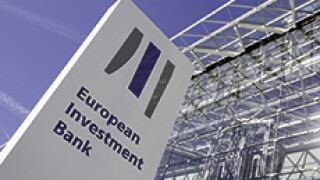EIB
-
The European Investment Bank added another deal to its recent burst of issuance in euros on Monday, as a German state mandated banks for a €500m August 2019 deal.
-
A supranational is set to become the first European SSA to bring a syndication after Greece reached a deal with its creditors on Monday morning — but will steer clear of euros.
-
European Investment Bank has printed in Ecoop format for the second day in a row, as conditions improved for eurozone periphery sovereign issuers — aside from Greece.
-
A public sector borrower eked out €500m of tightly priced euro supply on Tuesday, as activity in the currency was subdued while market participants digested the latest news on Greece’s bail-out negotiations.
-
The Flemish Community of Belgium has hit the market with a quartet of private medium term notes — a rare appearance from a public sector borrower in the currency this week.
-
European Investment Bank tapped a 2021 sterling floating rate note for £250m on Wednesday. Some sterling buyers are moving from the short end to the belly of the curve in search of yield, said SSA bankers.
-
FMS Wertmanagement placed a short three year bond in sterling on Tuesday, while the European Investment Bank announced a tap of a 2021 line in the currency.
-
A dollar market that has been a haven for issuers avoiding the troubled euro sector is starting to show signs of congestion, bankers have warned.
-
The public sector dollar bond pipeline for Wednesday is filling up, with a series of issuers set to follow a three year dollar benchmark from the European Investment Bank on Tuesday.
-
The European Investment Bank has mandated for a dollar benchmark, a currency that has formed a much larger part of its issuance compared to the last few years.
-
A pair of issuers were able to access sterling in size this week as European investors increasingly seek to buy in the currency.
-
A group of supranationals has published guidelines for green bond impact reporting, hoping to make it easier for investors to make comparisons within the asset class.




